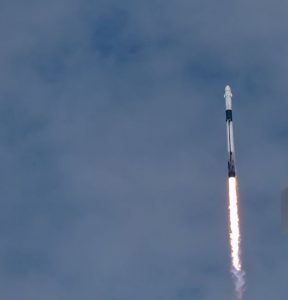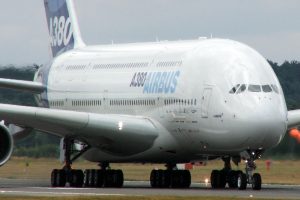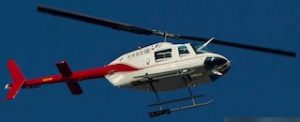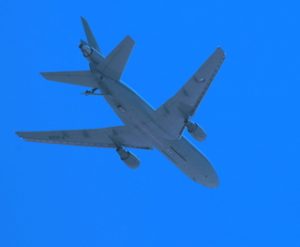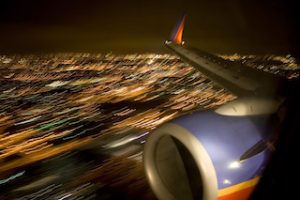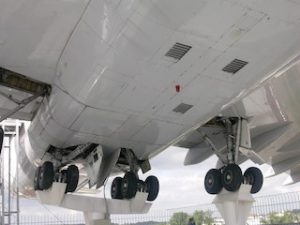The Main Aerospace Aeronautical Engineering Differences
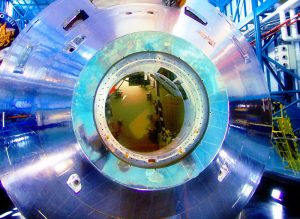 The fields of aerospace engineering and aeronautical engineering are often used interchangeably, but they represent distinct disciplines within the broader scope of engineering. Both are integral to the design, development, and operation of aircraft and spacecraft, yet they focus on different environments, technologies, and challenges. Understanding the nuances of these two fields is essential for students, professionals, and enthusiasts alike, particularly as advancements in aviation and space exploration continue to reshape industries worldwide.
The fields of aerospace engineering and aeronautical engineering are often used interchangeably, but they represent distinct disciplines within the broader scope of engineering. Both are integral to the design, development, and operation of aircraft and spacecraft, yet they focus on different environments, technologies, and challenges. Understanding the nuances of these two fields is essential for students, professionals, and enthusiasts alike, particularly as advancements in aviation and space exploration continue to reshape industries worldwide.
In this article, we will explore the core differences between aerospace and aeronautical engineering, their respective career paths, educational requirements, and applications. By providing a detailed comparison, we aim to highlight the unique contributions of each field while emphasising how they collectively push the boundaries of flight, from atmospheric planes to deep-space probes.
Defining aerospace and aeronautical engineering
To fully grasp the differences between aerospace aeronautical engineering, you need to understand how they are defined.
- Aerospace engineering is a broad field that encompasses both atmospheric and space flight. It is concerned with the design, development, and testing of all types of flying vehicles, including airplanes, helicopters, drones, satellites, spacecraft, and rockets. This field can be divided into two main branches: aeronautical engineering, which focuses on flight within Earth’s atmosphere, and astronautical engineering, which deals with space travel and vehicles designed to operate beyond the atmosphere.
- Aeronautical engineering, on the other hand, is a subset of aerospace engineering that focuses exclusively on the development and operation of aircraft within earth’s atmosphere. This includes commercial airliners, military jets, helicopters, and drones. Aeronautical engineers are tasked with solving the unique challenges of atmospheric flight, such as air resistance, lift, drag, and the environmental effects on aircraft.
While these definitions are closely related, the scope and challenges associated with each field differ significantly. Let’s explore these differences in greater depth.
Key differences
The most significant difference between aerospace engineering and aeronautical engineering lies in their scope.
- Aeronautical engineering is confined to atmospheric flight. This includes designing aircraft that can operate efficiently within the Earth’s atmosphere, taking into account forces like gravity, air pressure, and atmospheric turbulence. Engineers in this field focus on the optimization of flight performance through careful analysis of aerodynamics, propulsion systems, structural integrity, and materials science. The goal is to design aircraft that are safe, efficient, and capable of withstanding the stresses of atmospheric flight.
- Aerospace engineering includes all aspects of aeronautical engineering but extends beyond Earth’s atmosphere to encompass the design and development of spacecraft. This means that aerospace engineers must also contend with the challenges of space travel, such as operating in a vacuum, extreme temperatures, radiation exposure, and microgravity environments. As a result, aerospace engineers work on a broader range of vehicles, from airplanes and helicopters to satellites, rockets, and space shuttles.
In short, while aeronautical engineering is focused solely on aircraft, aerospace engineering has a wider focus, covering both atmospheric and space flight technologies.
Educational pathways
For those interested in pursuing a career in either field, understanding the educational requirements is crucial.
- Aeronautical engineering programs generally focus on courses related to flight within the atmosphere. These include classes on aerodynamics, fluid dynamics, structural mechanics, propulsion, and avionics systems. Students learn how to design, build, and test aircraft, along with conducting research to improve flight performance, safety, and efficiency. Many universities offer specialised degrees in aeronautical engineering, often within their aerospace engineering departments. These programs are typically four years at the undergraduate level, with the opportunity for more advanced study at the master’s or doctoral levels.
- Aerospace engineering programs cover a broader range of topics. In addition to the courses offered in aeronautical engineering, students take classes on spacecraft dynamics, satellite communications, orbital mechanics, rocket propulsion, and space systems design. This allows them to work on projects related to space travel, including the development of rockets, satellites, and space exploration vehicles. An aerospace engineering degree typically includes courses in both aeronautics and astronautics, providing students with the knowledge necessary to work on a wide array of flight-related technologies. Like aeronautical engineering, degrees are offered at the bachelor’s, master’s, and doctoral levels.
For both disciplines, obtaining a degree accredited by recognised engineering bodies, such as ABET in the United States, is essential for ensuring quality education and increasing job prospects.
Aerodynamics, propulsion, structures, and More
Despite their different scopes, aerospace and aeronautical engineering share several foundational disciplines. These core areas form the backbone of both fields, though they may be applied in different ways depending on whether the focus is atmospheric or space flight.
- Aerodynamics: Both fields rely heavily on understanding aerodynamics, which deals with how air flows around an aircraft or spacecraft. Aeronautical engineers analyze airflow around wings, fuselages, and control surfaces to optimize lift and reduce drag. Aerospace engineers, while also focused on aerodynamics, may also apply this knowledge to spacecraft re-entry into Earth’s atmosphere or the aerodynamics of space planes designed to operate in both atmospheric and space environments.
- Propulsion systems: Propulsion is the science of generating thrust to move a vehicle forward. Aeronautical engineers work primarily with jet engines, turbofans, and propellers to power aircraft. Aerospace engineers, however, also deal with rocket propulsion systems, including chemical rockets, ion thrusters, and hybrid propulsion systems used for space exploration.
- Structures and materials: Both fields require expertise in designing lightweight, durable structures that can withstand the forces of flight. Aeronautical engineers focus on materials that can endure the stresses of atmospheric pressure, turbulence, and temperature changes. Aerospace engineers must also consider materials that can survive the vacuum of space, radiation exposure, and the thermal stresses associated with re-entry into earth’s atmosphere. Advances in materials science, such as the use of carbon composites and high-performance alloys, are critical to both fields.
- Avionics and flight control systems: Avionics refers to the electronic systems used for communication, navigation, and control in aircraft and spacecraft. Aeronautical engineers design avionics systems to ensure stable flight and accurate navigation within the atmosphere. Aerospace engineers must extend these systems for use in space, developing communication systems that can operate over vast distances and flight control systems capable of handling the unique challenges of space travel.
Career opportunities
The career opportunities in aerospace and aeronautical engineering differ based on the specific technologies and industries each field serves.
- Aeronautical engineering careers are primarily centred around the aviation industry. Engineers may work for commercial airlines, defense contractors, aircraft manufacturers, or government agencies, focusing on the design, testing, and maintenance of aircraft. Common job roles include aircraft design engineer, flight test engineer, propulsion engineer, and aerodynamics specialist. Aeronautical engineers are also involved in improving aircraft safety, fuel efficiency, and environmental impact, making this a critical field for addressing the needs of modern aviation.
- Aerospace engineering careers extend beyond aviation to include roles in the space exploration and satellite industries. Aerospace engineers may work for space agencies such as NASA or ESA, private space companies like SpaceX and Blue Origin, or defense contractors involved in missile systems and satellite technologies. Career opportunities include spacecraft design engineer, satellite systems engineer, mission analyst, and propulsion systems specialist. With the growing interest in commercial space travel and satellite communications, aerospace engineers are at the forefront of some of the most exciting technological advancements of the 21st century.
Future of aerospace and aeronautical engineering
Both aerospace and aeronautical engineering are rapidly evolving fields, driven by technological advancements and the increasing demand for efficient, sustainable, and innovative flight technologies.
- In aeronautical engineering, the future will likely be shaped by the development of more fuel-efficient aircraft, electric propulsion systems, and autonomous flight technologies. Efforts to reduce the environmental impact of aviation, such as decreasing carbon emissions and noise pollution, are at the forefront of current research. Additionally, the rise of urban air mobility concepts, including flying taxis and drones, is expected to create new opportunities for aeronautical engineers in the coming decades.
- In aerospace engineering, the future holds even broader possibilities, with increasing interest in space exploration and commercial space travel. Companies like SpaceX, Blue Origin, and Boeing are leading the charge in developing reusable rockets, space tourism, and interplanetary exploration vehicles. Satellite technologies, particularly for global communication networks and Earth observation, will also play a significant role in shaping the future of aerospace engineering. As humanity looks toward Mars and beyond, aerospace engineers will be essential in designing the spacecraft and systems needed to explore and colonise other planets.
Distinguish between them
While aerospace engineering and aeronautical engineering share many foundational principles, they differ in scope, with aerospace engineering encompassing both atmospheric and space flight technologies. Aeronautical engineering focuses exclusively on aircraft and systems that operate within earth’s atmosphere, while aerospace engineering extends to spacecraft and space systems designed to function beyond our planet. Both fields are essential to the future of aviation, space exploration, and defense, offering exciting career opportunities for engineers eager to push the limits of what is possible in flight. Whether developing the next generation of commercial airplanes or exploring the final frontier, engineers in both fields will continue to play a pivotal role in shaping our world and beyond.
By understanding these differences and the unique challenges of each field, students and professionals can make informed decisions about their education and careers in aerospace aeronautical engineering and contribute to the groundbreaking advancements that define these dynamic industries.



